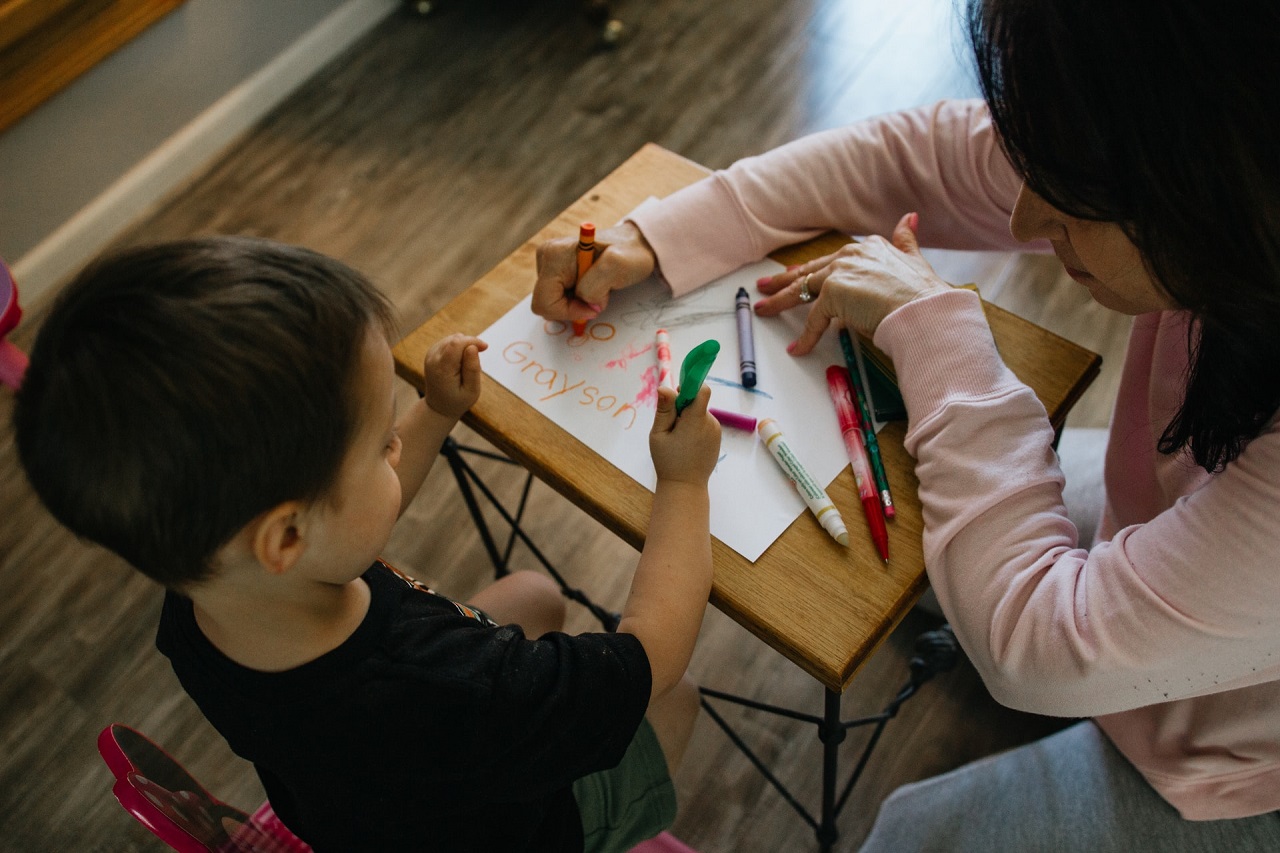No matter if you are teaching in Timbuktu or Chicago, you will have to deal with students that are attentive, disruptive, well behaved, and some that might be better described as a bunch of monkeys. Is there a clear cut solution across the board that will work for every student? No! The solution that is available for all teachers everywhere is their ability to innovate and think creatively to help everyone learn.
I have been an adjunct graphic design professor for a few years now at various local colleges in my area. Recently, I began working with a few universities creating and sharing their infographics. There is one that caught my eye because of my background that is about technology in the classroom. It got me to thinking how as a graphic design teacher who relies so heavily on technology to teach a subject, I still use a number of “low tech” methods for interactive teaching. Let me share a few of those with you.
Learn with the students
 The first thing I like admit is that I do not know everything. I do not ever pretend to be a huge authority in any particular area and in fact when a student asks me something I do not know I get excited. I get to learn with my student. I sit down and show them exactly what I do to find the information, so I get to learn something new and the student gets to see a teacher learning right alongside them. This process is very enriching for everyone involved. Teachers are not perfect nor is our knowledge infallible, so while we do not want students to question our authority they should have no reservation to ask the hard “whys” and expect a heartfelt answer backed by no less research than we expect of them.
The first thing I like admit is that I do not know everything. I do not ever pretend to be a huge authority in any particular area and in fact when a student asks me something I do not know I get excited. I get to learn with my student. I sit down and show them exactly what I do to find the information, so I get to learn something new and the student gets to see a teacher learning right alongside them. This process is very enriching for everyone involved. Teachers are not perfect nor is our knowledge infallible, so while we do not want students to question our authority they should have no reservation to ask the hard “whys” and expect a heartfelt answer backed by no less research than we expect of them.
Interact more with the students
Classrooms are changing at a faster pace than we as teachers are able to adapt to them. Some classrooms may have newer technology to facilitate learning while others do not. I am not going to preach that all schools need to purchase an iPad for every student worldwide and expect results to pour in. What I am going to say is that our level of interactivity in the classroom needs to rise with the level of interactive technology that students are being exposed to.
How often do we refer to examples in our textbooks to portray a particular bit in the curriculum? Little Timmy needs to buy 2 apples for every friend sitting at his table. If he has 4 friends, how many apples should he buy? This is all too common and is the format all textbooks use because they cannot interact with the audience like a teacher can. You would be surprised at how well student will perk up if you just use their names in the story. Call a student out by name and make them a part of the example. Let other students help you craft the story by selecting things to buy and how much they cost. Use real physical currency to help portray that this is a real thing they will deal with on a daily basis.

One on one with the students
Another level of interaction that is much more difficult to achieve but is very necessary is one on one time with students individually. With a phone, gaming system, or computer the student is able to interact on an individual level and that is what they become accustomed to. In the classroom, we assign grades and if someone is failing we may pull them aside to talk individually, but it’s the exception and not the rule.
If we took time to ask a student about their comprehension on a topic and give advice, then we would notice a difference. We would be able to stop and address individual issues and not just gloss over them because we are in the middle of an open lecture. This is where I have addressed the hard issue with a student as to why they did their homework or not. It is not always an easy question to answer.
One practice I use during this time is to ask them how they would grade themselves. The answer usually surprised me because some of those who I thought had grasped the concept graded themselves lower and I was able to find out how well they really understood the material. Some of them assigned themselves a higher grade than they should have and we had a conversation about being honest with ourselves. All in all it was a great practice.
There are many ways we can increase the level of interactivity in our classrooms and while some of these things may help some I hope they get all to think outside the box. There realistically is no way to keep up with the rising level of technology in the classroom but we can raise our level of interaction with the individual students.
How do you make your lessons as interactive as possible? Feel free to join the discussion!




